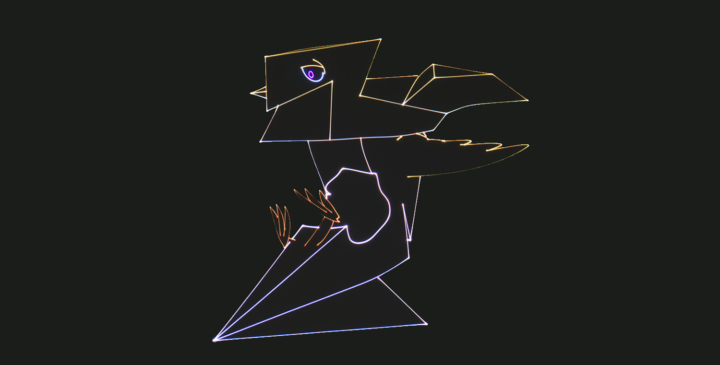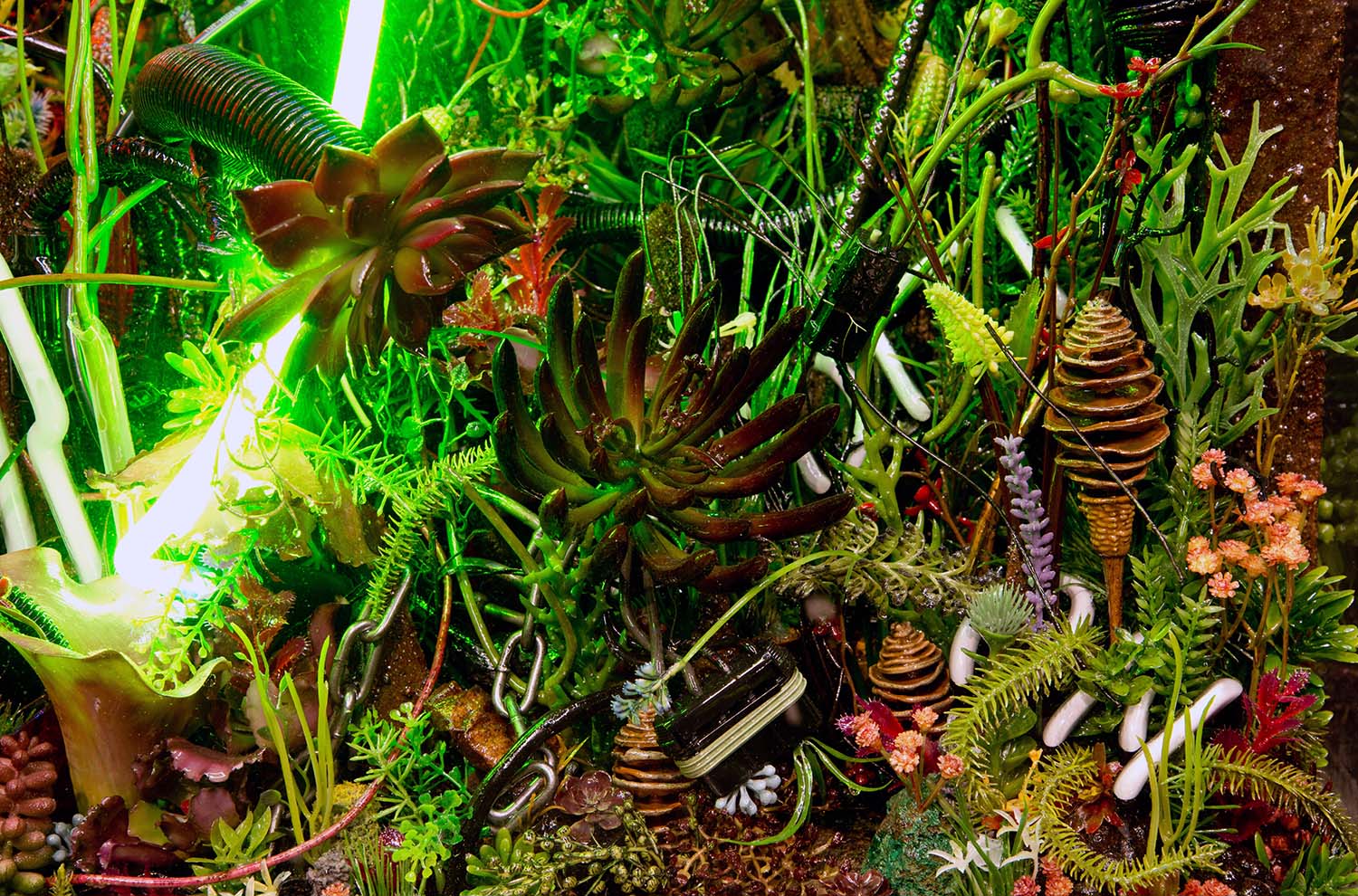Matt Copson’s installation at the Fondation Louis Vuitton in Paris, entitled Blorange, consists of three laser projections of animated birds. One flies gracefully before shards of light impale it in various places; another, seemingly alive and well, rotates on a skewer, intermittently collapsing into a horizontal line, and ultimately transforms into a vortex; and the third is still recognizably a bird, but comprised of cubistic geometric shapes, into which it ultimately dissembles. These animations are backed by a soundtrack consisting of a monologue by Copson read by a child, ostensibly delivered by the skewered bird, accompanied by various electroacoustic whirrs, creaks and squelches by experimental pop producer Felicita.
At one point in this monologue it is declared that ‘The fascists are dead. We are the fascists now! The paintings are dead. We are the paintings now.’ The first couplet might be understood as pure cavalier provocation, especially irresponsible in an age when Fascism is certainly not dead. It calls to mind Anarchist (2015), one in a series of sound pieces by Copson documenting scattergun prank calls across the political spectrum made under the guise of his alter ego Reynard the fox, in which he baits an anarchist bookshop by implying that leftists are jobless layabouts. The second couplet, on the other hand, is more interesting. The notion that painting is dead was of course one which occupied a lot of thinkers throughout the latter half of the twentieth century. Whether they marked its demise with Malevich’s square, Duchamp’s fountain, or Reinhardt’s monochromes, this conviction was usually premised on a teleological conception of art inherited from the once-hegemonic American critic Clement Greenberg, whereby painting had exhausted all of its possibilities.

While this question might seem quite antiquated now, I think this claim on the part of the bird that he and his two companions are paintings after the death of painting is telling in terms of something fundamental to Copson’s multidisciplinary praxis, even if not intended on his part. Greenberg often characterised his concept of painting’s medium-specificity in terms of artworks mapping out the essential conditions of the art-form. Yet, it is arguable that what he was actually talking about was painting’s capacity to do justice to particularity. This, I think, is precisely what Copson does in his work. As he claims in reference to the impetus behind Blorange, ‘the bird is a symbol which has been co-opted by almost every political party and ideology I can think of. I want to give it autonomy.’ However, I would contend that in allowing the elements of his artworks to speak on their own terms and escape political co-optation, his work models order without inherited hierarchy, and thus has political import which belies its content’s flagrant lack of political coherence.
This is all the more remarkable for the fact that Copson so often skirts narrative form, a mode whose elements are usually only of significance in terms of an overarching story. Much of Copson’s work up to now has concerned the antics of the aforementioned Reynard, a character based on the anthropomorphic red fox from Medieval European fables. The most explicitly story-based example is A Woodland Truce, a play ‘performed’ by fake fur and polystyrene animal sculptures in the Serpentine Sackler Gallery in 2016, in which Reynard coaxes the other animals into a death pact from which only he escapes unscathed. However, Copson has elliptically told tales in many of his other solo shows. In Reynard Reforms (2015), a monologue accompanied by painting, drawing, sculpture and illuminated drums, tells of how Reynard repents his nefarious ways and grows a human leg. In Reynard Reprised (2016), Reynard’s decapitated head converses with his body, backlit by painted LED panels featuring various of his body parts. And in Reynard’s Fundament (2016), Reynard’s soul inhabits a massive meteoroid, his mortal form having ‘exploded in revolutionary disdain.’ In all of these shows, the various parts do not exist for the whole. Contrarily, the opposite is true, and the whole seems to exist for the parts. That is to say, the shows operate as constellations, in which each element maintains the visceral integrity of its particularity as an autonomous work, while at the same time gaining significance in relation to the other elements.




